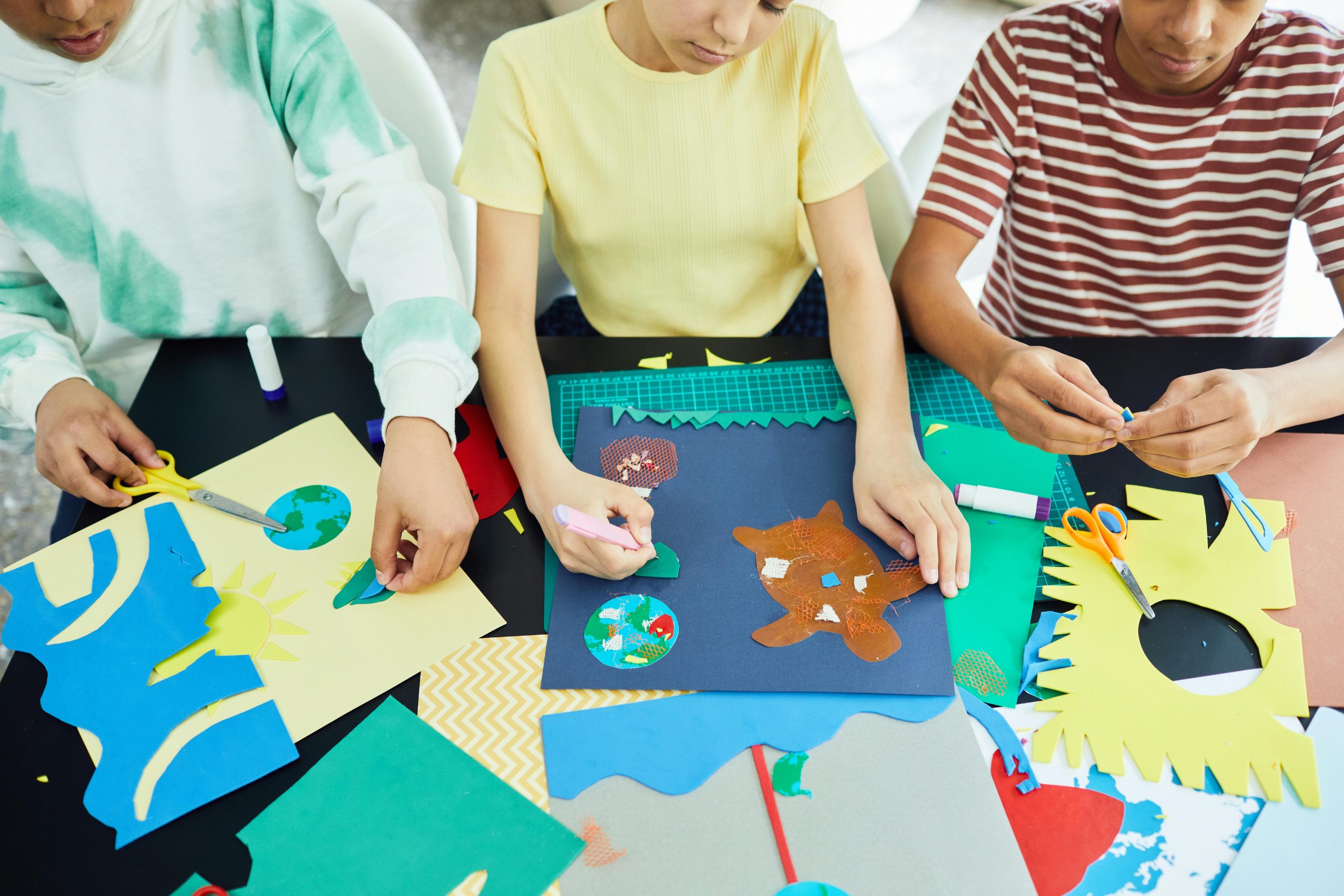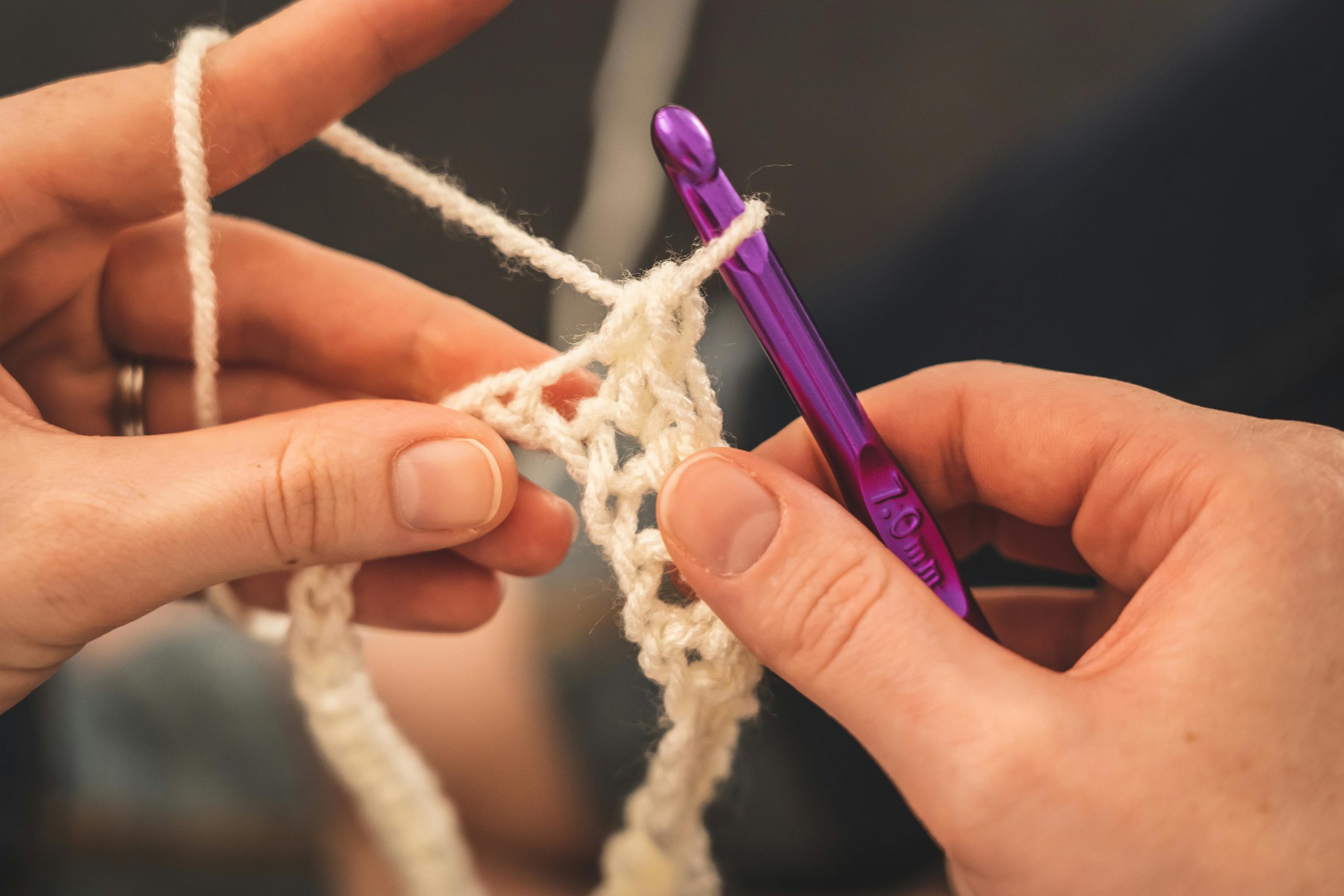Introduction to Crafting with Kids

Crafting plays a pivotal role in child development, serving as a cornerstone for unleashing creativity, honing fine motor skills, and strengthening family bonds. It’s more than just play; it’s a journey through imagination and learning. By engaging in crafting, children explore a world where colours blend, textures vary, and ideas come to life, enhancing their creative thinking. Simultaneously, manipulating small materials improves their fine motor skills, essential for academic success. Moreover, crafting together fosters an environment of collaboration and love, creating cherished family memories. As we embark on this adventure through fun and educational crafting projects, we set the stage for a fulfilling and enriching experience that benefits every facet of a child’s development.
Selecting Age-Appropriate Crafts

Choosing the right craft is crucial. It’s about understanding where a child is at developmentally and picking projects that not only entertain but also challenge them appropriately. This ensures that the crafting experience is both enjoyable and beneficial, aiding in their growth and learning.
Understanding Developmental Stages
- Each child is unique, but there are general milestones to consider.
- Toddlers are exploring their world, preschoolers are refining their motor skills, and school-aged children are ready for more complex tasks.
- Selecting crafts that align with these stages enhances their developmental journey.
Tips for Adapting Projects
- Flexibility is key. For younger children, simplify steps and use larger materials.
- Older kids can handle more intricate tasks and smaller components.
- Always prioritise safety, ensuring materials are age-appropriate.
Examples of Age-Appropriate Crafts
- Toddlers: Handprint art or simple threading activities using large beads and shoelaces.
- Preschoolers: Collage making with cut-out pictures or easy clay modelling to enhance their fine motor skills.
- School-aged Children: More complex projects, like building a birdhouse or creating a scrapbook, a jewelry making course require patience and precision.
By carefully selecting and adapting crafts, we can provide children with a rich educational experience that is just right for their stage of development. This not only fosters their creativity and motor skills but also builds their confidence as they see their abilities grow. Crafting, therefore, becomes a powerful tool in a child’s learning and development journey, making every project an adventure worth embarking on.
Incorporating Educational Elements into Crafts

Merging art with learning transforms crafting into a powerful educational tool. By combining basic ideas of arithmetic, science, and reading into craft projects, children engage in a hands-on learning experience that is both enjoyable and enriching. This approach not only reinforces classroom learning but also sparks curiosity and a love for discovery.
Crafts That Teach
- Imagine the exhilaration of constructing a homemade volcano, where the delight of seeing it erupt is matched only by the science education it gives.
- Crafting alphabet letters from clay or cardboard delivers a tactile literacy experience, making the abstract concept of letters more vivid and intelligible.
- Similarly, making a simple abacus helps teach young brains the foundations of counting and arithmetic.
Encouraging Environmental Awareness
- Environmental education can also start with crafts. Using repurposed materials or elements from nature teaches youngsters the value of sustainability and conservation.
- Projects like building bird feeders from recycled milk bottles or creating art with fallen leaves and flowers not only develop creativity but also impart a sense of responsibility towards our earth.
This hands-on approach to learning about the environment can have a lasting influence, inspiring children to become stewards of the land.
For more ideas on educational crafts and activities, the Raising Children Network offers a plethora of resources geared to different developmental stages, ensuring that your making sessions are both enjoyable and beneficial.
Step-by-Step Guide to Selected Fun and Educational Projects

Embarking on making projects with youngsters unlocks a world of learning and fun. Each project provides a doorway to new skills, giving a blend of instruction and fun. Our handbook gives precise directions for a variety of tasks, guaranteeing there’s something for every young student.
Detailed Instructions for Diverse Interests
From constructing a small birdhouse to creating a spectacular undersea landscape with paper and paint, our projects cater to a wide range of interests. Visual aids accompany each step, making it easy for children to follow along. Whether your youngster is attracted by nature, science, or art, we’ve got a project that will spark their curiosity.
Adapting to Different Skill Levels
Understanding that children have diverse capacities, we offer several techniques to fit different ability levels. For younger children, projects can be simplified, utilizing larger materials and fewer stages. Older youngsters are encouraged to add complexity to their projects, pushing their skills and extending their learning.
Tips for Troubleshooting
- If glue isn’t sticking well, ensure surfaces are clean and dry. Press firmly and hold.
- For paint accidents, cover with a base coat and try again once dry.
- Difficulty threading beads? Use a piece of tape to strengthen the end of the string.
These recommendations help manage common crafting obstacles, guaranteeing a seamless and enjoyable experience. By giving clear directions, visual aids, and troubleshooting hints, we encourage children to explore, learn, and grow via making. Each activity not only increases their creativity and motor abilities but also promotes confidence and a sense of achievement.
Remember, the trip is as essential as the destination. Encourage discovery and praise every invention, no matter how small. Happy creating!
Making the Most of Crafting Time

Engaging reluctant makers begins with recognizing their interests. Introduce projects that resonate with their passions, whether it’s dinosaurs, space, or fairy tales, making the creating experience relevant and interesting. This technique not only draws kids in but also prepares the door for a newfound love for creation.
Striking the correct mix between instruction and independence is key. Start by demonstrating techniques, then step back to let them experiment. This encourages self-expression and problem-solving skills as they traverse problems and make decisions on their own. Encourage their efforts, regardless of the outcome, to build confidence and resilience.
Incorporating educational topics can transform crafting projects into memorable learning experiences. For instance, making a solar system model enriches students’ grasp of space, while creating a family tree enhances their knowledge of history and genealogy. These crafts not only enhance learning but also become cherished memories, recording moments of discovery and achievement.
Remember, the goal is to make making a pleasurable and enriching activity. By adapting to each child’s interests and developmental stage, giving the perfect combination of help and independence, and infusing projects with educational value, we may spark a lifetime love for creativity and learning.
Beyond the Craft: Extending the Learning Experience

Once the glue dries and the last bit of glitter settles, the creating journey need not stop. Extending the learning experience beyond the trade itself creates additional options for exploration and growth. Storytelling, for instance, may bring life into a simple craft project. Imagine a child making a paper dinosaur, then weaving an epic tale of its travels. This not only hones their narrative talents but also develops their affinity to the craft.
Role-playing, similarly, provides a dynamic element to the creative experience. A crown becomes a gateway to royalty, and a handcrafted wand is a tool for magical excursions. Such exercises help youngsters step into multiple roles, encouraging sensitivity and inventive thinking.
Creating a mini-exhibition of crafts can also be immensely fulfilling. It allows youngsters to demonstrate their work, instilling a sense of pride and achievement. This might be as easy as devoting a wall at home for their art or hosting a small exhibition for family members. It’s a celebration of their creativity and dedication.
Encouraging contemplation post-crafting is vital. Discussing what was learnt during the process and how it pertains to other aspects of life might bring significant insights. It’s an opportunity to connect the dots between creativity, problem-solving, and real-world applications.
The role of digital resources and online communities cannot be emphasized. They offer a treasure mine of inspiration and instruction for both kids and adults. From step-by-step tutorials to forums where crafters discuss their projects, the digital world is an extension of the crafting table. It’s an environment where ideas grow, and learning continues.
We enhance the process by including role-playing, storytelling, exhibitions, introspection, and digital research into the creating process. Every craft transforms into more than just a game; it serves as a springboard for deeper research and understanding.
In Conclusion
Kids can explore a world of creativity and learning via crafting. It’s an adventure that combines enjoyment with learning, encouraging a passion for exploration. Children not only improve their abilities via practical projects, but they also gain confidence and create enduring memories. This piece has demonstrated the potential of crafting as a development tool, providing guidance on how to choose projects that are appropriate for the child’s age, include instructional components, and broaden the learning process beyond the craft itself. Let’s embrace the craft of making and encourage children to explore, dream, and create as we continue to inspire young minds.
Crafting with Kids: Fun and Educational Projects FAQs
Yes, crafting can serve as a form of emotional expression and stress relief for children. It provides a non-verbal way to express feelings and experiences, which can be particularly beneficial for children who may not yet have the words to express themselves. Additionally, the sense of accomplishment from completing a craft can boost a child’s confidence and self-esteem.
Crafting can significantly enhance a child’s fine motor skills, creativity, and problem-solving abilities. Through activities like cutting, gluing, and assembling, children improve their hand-eye coordination and dexterity. Moreover, crafting encourages imaginative thinking and can boost a child’s self-esteem through the accomplishment of creating something on their own.
Covering work surfaces with newspapers or a washable cloth and using aprons can significantly reduce mess during crafting sessions. Opting for materials that are easy to clean up, like washable markers and paints, also helps. Preparing the crafting area in advance and having cleaning supplies ready can make post-crafting cleanup much easier.
Incorporate elements of learning such as counting, color recognition, and shape identification into crafting projects. For example, creating a color-matching game or assembling a homemade puzzle can make learning these concepts fun. This approach not only keeps the child engaged but also reinforces academic skills in a hands-on environment.
Consider the child’s motor skills, interest level, and the complexity of instructions when choosing a crafting project. Projects that match their skill level and interests are more likely to keep them engaged and feeling successful. For younger children, opt for projects with fewer steps and larger materials, while older children may enjoy more detailed crafts that challenge their skills.
Easy crafts for toddlers include finger painting, collage making with cut-out shapes, and clay modeling. These activities are designed to be simple and engaging, allowing toddlers to explore textures and colors without the need for complex instructions. They help toddlers develop sensory skills and encourage creativity from a young age.
Projects that repurpose household items like cardboard tubes, fabric scraps, and plastic containers promote environmental awareness. These crafts teach children the importance of recycling and creativity in reducing waste. Engaging in such projects not only nurtures a child’s creativity but also instills a sense of responsibility towards the environment.
Group projects like mural painting, collaborative collage creation, or a group sculpture project encourage teamwork and social skills. These activities allow children to contribute individually towards a common goal, fostering a sense of community and cooperation. They are also great for parties or classroom settings where the aim is to involve every child in the creative process.
Using clear, labeled bins or containers to organize craft supplies makes them easily accessible and helps teach kids how to tidy up after themselves. Grouping items by type (e.g., markers, stickers, paper) in separate containers can simplify the finding process for a child. This organization method minimizes mess and encourages independence in choosing and using materials.
Non-toxic, washable, and age-appropriate materials are safe for kids to use in crafting. These include items like water-based paints, crayons, and paper, ensuring that the crafting experience is both fun and free from harm. It’s important to always check the labels for age recommendations and safety certifications.

Jasmine Duque-Love is a mother of one and a practicing physiotherapist with a Phd in Physiotherapy

